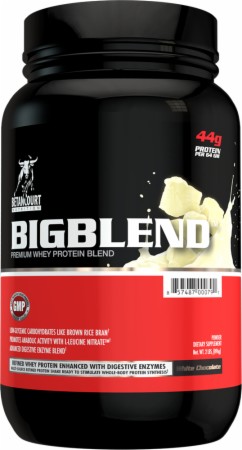With the increasing popularity of fitness competitions and high-intensity sports like CrossFit, the market for nutritional supplements has grown exponentially. Protein supplements such as Whey Casein protein are often consumed post-workout by athletes wishing to increase muscle mass to get the most out of their strength-training or resistance workouts. While most athletes have a preference of what type of protein supplement they prefer to use, it is unlikely that many know the biological mechanisms of how these supplements work, and the physiological differences between the various types. If you are wondering which type of protein you should consume after an intense workout, Paul T. Reidy and his team of researchers may have the answer for you.
The digestion of protein supplements increases the amount of available amino acids, which in combination with resistance exercise, changes the muscle's response to anabolic exercise by enhancing the transport rate of amino acids into muscles cells. Higher amino acid transport rates have been shown to contribute to increase muscle mass and strength.
Until Reidy et al. there had been no study on whether the type of protein supplements influenced amino acid transport rates or expression of amino acid transporters in skeletal muscles. Using muscle biopsies and blood samples of health, young adults, Reidy and his team examined the molecular effects of whey protein and soy-dairy protein blends on post-exercise muscles.
There are two popular types of protein supplements currently circulating in the market: Pure whey protein supplements and various forms of blend proteins. The blend protein used by Reidy and his team was composed of 25% soy, 25% whey, and 50% casein, meaning that the supplement has several different digestion
rates, whereas pure whey protein is digested fairly rapidly and all at one time. Importantly, this suggests that the length of time that amino acid transporters will be activated is longer in the blend supplement than the pure whey supplement.
Gold Standard Whey. Digital image. www.nutraplanet.com. 22 Aug. 2011. Web.
References:
Big Blend Protein Powder. Digital image. www.bb2k.blogspot.com. 25 Feb. 2015. Web.
Interestingly, Reidy and his team found several significant differences in the manner in which pure whey and blended affected amino acid transport in muscle cells.
While both types of protein sources showed increased skeletal muscle amino acid transport and higher numbers of amino acid transports, the overall muscle protein anabolism (tissue synthesis) was greater when the participants consumed the protein blend. Whey protein promoted the greatest amino acid transport quickly after consumption of the supplement (1-2 hours after ingestion), whereas the protein blend had a longer-lasting period of amino acid transport, which peaked at 2-3 hours post-ingestion. The extended amino acid flux found in the protein blend is likely due to the combination of intermediate digestion of the soy and a much longer digestion of the casein.
Interestingly, the average amino acid transport over the whole time period was similar between the two protein types, suggesting that while the amount of muscle mass created might be the same, the mechanism of adding the mass differs between the two supplements.
Expression of enzymes that are key markers of muscle protein breakdown were enhanced for both supplement types; however, the amount of the enzymes was much less than the enzyme concentration found in participants who did not consume any supplement after exercise, which could indicate that the supplements were also important for muscle turnover.
Reidy and the team suggest that the increased muscle protein anabolism is most likely due to increased and elongated translation of transporters and proteins important for muscle synthesis, such as myofibrillar proteins.
So remember, next time you are looking to bulk up and go to your local vitamin or nutrition shop, you might want to consider getting a soy-dairy protein blend. Not only will you get the most out of your supplement, it is also often quite cheaper!
Reidy, P.T., Walker, D.K., Dickinson, J.M., Gundermann, D.M., Drummond, M.J, Timmerman, K.L., ... Rasmussen, B.B. Soy-dairy protein blend and whey protein ingestion after resistance exercise increases amino acid transport and transporter expression in human skeleton muscle.. J Appl Physiol, 116 (11): 1353-64 (2014).


I really enjoyed this post! My old strength trainers always used to make me drink muscle milk which had a combination of whey and caesin. I never fully understood how these drinks help build muscle and help with recovery until now! I wonder if they could develop different blends for different sports, proportionally to how much muscle you want to build.
ReplyDeleteThis was a really interesting post because it proves how what you consume post-workout directly affects your physiology. I thought it was interesting how the cheaper soy-dairy blend was proven to be more effective. I think an innovative application of this information would definitely be to make different blends of protein specific to different types, styles, and frequencies of workouts and body types/gender as well.
ReplyDeleteGreat article! I found this particularly interesting due to the fact that recently there has been some issues regarding the market of dietary supplements, and the lack of any real nutritional value. Obviously, protein drinks are different, but it also made me question these as well--anything that looks professional with a label and complicated ingredients that says it will help you tends to sell fairly well. I think it was interesting to see that the evaluation of the different protein compositions were digested differently. I am curious as to whether or not it is possible to develop protein shakes for people who are lactose intolerant/allergic to soy/whatever dietary restriction it might be. Would there be something that could be developed that would provide comparable nutritional value?
ReplyDeleteLike many of the other comments, I really enjoyed this article and what you had to say. I think the mention of the simple alternative, Chocolate Milk, might be beneficial to discuss. Dairy, Sugar, and carbs are all you need directly after a workout and thats what chocolate milk provides but we actually know 100% what is in it unlike the muscle milk and whey powders.
ReplyDelete